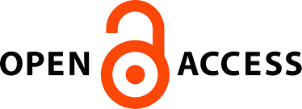| dc.contributor.advisor | Uribe Moreno, Miguel Eduardo | |
| dc.contributor.author | Velásquez Galvis, Melissa | |
| dc.date.accessioned | 2019-10-16T16:37:51Z | |
| dc.date.available | 2019-10-16T16:37:51Z | |
| dc.date.issued | 2019-09-04 | |
| dc.identifier.uri | http://hdl.handle.net/10818/37734 | |
| dc.description | 26 páginas | es_CO |
| dc.description.abstract | En este trabajo se pretende determinar si existen diferencias en las actitudes implícitas frente a la mujer científica, entre estudiantes de carreras STEM y NO STEM. Para evaluar las actitudes implícitas se aplicó un Test de Asociación Implícita (TAI) el cual tienen como objetivo medir a través de los tiempos de reacción, la fuerza de asociación de distintas categorías en las actitudes de los participantes. Se realizaron dos estudios: El primero pretende comparar la actitud implícita entre las carreras. En este sentido el análisis arrojó que no existen diferencias significativas entre las carreras con respecto a las actitudes implícitas estudiadas. En el estudio dos se comparan el desempeño en la tarea en virtud del orden de presentación. Se encontró que el orden de presentación de las tareas del TAI afecta los resultados que arroja el instrumento. Se analizan los hallazgos a la luz de los problemas metodológicos que se reportan respecto al TAI. | es_CO |
| dc.language.iso | spa | es_CO |
| dc.publisher | Universidad de La Sabana | es_CO |
| dc.rights | Attribution-NonCommercial-NoDerivatives 4.0 International | * |
| dc.rights.uri | http://creativecommons.org/licenses/by-nc-nd/4.0/ | * |
| dc.source | Universidad de La Sabana | |
| dc.source | Intellectum Repositorio Universidad de La Sabana | |
| dc.subject | Actitud (Psicología) | es_CO |
| dc.subject | STEM (Método de enseñanza) | es_CO |
| dc.subject | Evaluación educativa | es_CO |
| dc.subject | Rendimiento académico | es_CO |
| dc.title | Actitudes implícitas de la mujer en la ciencia en estudiantes pertenecientes a carreras STEM y no STEM de la Universidad de La Sabana. | es_CO |
| dc.type | bachelorThesis | es_CO |
| dc.publisher.program | Psicología | |
| dc.publisher.department | Facultad de Psicología | |
| dc.rights.accessRights | restrictedAccess | |
| dc.creator.degree | Psicólogo | |
| dcterms.references | Abreu, J. (2012). Hipótesis, Método & Diseño de Investigación (Hypothesis, Method &
Research Design). Daena: International Journal of Good Conscience, 7(2), 187-197. | spa |
| dcterms.references | Agencia Anadolu. (2018, 12 de febrero). Tan solo el 28% de los investigadores en el mundo
son mujeres. El Espectador. Recuperado de
https://www.elespectador.com/noticias/ciencia/tan-solo-el-28-de-losinvestigadores-del-mundo-son-mujeres-articulo-738608 | spa |
| dcterms.references | Álvarez, F. J., Arias, A., Serrallé, J., & Varela, M. (2014). Elección de estudios de
ingeniería: Influencia de la educación científica y de los estereotipos de género en la
autoestima de las alumnas. Revista de Investigación en Educación, 12 (1), 54-72.
Recuperado de file:///C:/Users/Usuario/Downloads/DialnetEleccionDeEstudiosDeIngenieria-4736055.pdf | spa |
| dcterms.references | Apfelbaum, E.P., Stephens, N.M. & Reagans, R.E. (2016). Beyond one-size-fits-all:
Tailoring diversity approaches to the representation of social groups. Journal of
personality and social psychology, 111 (4), 547-566. doi: 10.1037/pspi0000071. | eng |
| dcterms.references | Block, C. J., Cruz, M., Bairley, M., Harel-Marian, T., & Roberson, L. (2018). Inside the
prism of an invisible threat: Shining a light on the hidden work of contending with
systemic stereotype threat in STEM fields. Journal of Vocational Behavior, 1-18. doi:
https://doi.org/10.1016/j.jvb.2018.09.007 | eng |
| dcterms.references | Briñol, P., Horcajo, J., Becerra, A., Falces, C., & Sierra, B. (2002). Cambio de actitudes
implícitas. Psicothema, 14(4), 771-775. Recuperado de
http://www.redalyc.org/articulo.oa?id=72714413 | spa |
| dcterms.references | Cañón, J. K., Botía, A. L. C., & García, Y. A. (2014). Procedimiento de evaluación relacional
implícita para evaluar profesiones estereotipadas según el género. Horizontes
Pedagógicos, 1(16), 55-65. Recuperado de
https://revistas.iberoamericana.edu.co/index.php/rhpedagogicos/article/view/777/671Cárdena | spa |
| dcterms.references | s, M., & Barrientos, J. (2008). Actitudes explícitas e implícitas hacia los hombres
homosexuales en una muestra de estudiantes universitarios en Chile. Psykhe
(Santiago), 17(2), 17-25. doi: http://dx.doi.org/10.4067/S0718-22282008000200002 | spa |
| dcterms.references | Carli, L. L., Alawa, L., Lee, Y., Zhao, B., & Kim, E. (2016). Stereotypes about gender and
science: Women≠ scientists. Psychology of Women Quarterly, 40(2), 244-260. doi:
10.1177/0361684315622645 | eng |
| dcterms.references | Chambers, D. W. (1983). Stereotypic images of the scientist: The Draw a Scientist
Test. Science education, 67(2), 255-265. Recuperado de
file:///C:/Users/Usuario/Downloads/Chambers-1983-Science_Education.pdf | eng |
| dcterms.references | Dee, T. S. (2007). Teachers and the gender gaps in student achievement. Journal of Human
resources, 42(3), 528-554. Recuperado de
https://core.ac.uk/download/pdf/6853897.pdf | eng |
| dcterms.references | Del Río, M. F., Strasser, K., & Susperreguy, M. I. (2016). ¿Son las habilidades matemáticas
un asunto de género?: Los estereotipos de género acerca de las matemáticas en niños
y niñas de Kínder, sus familias y educadoras. Calidad en la educación, (45), 20-53.
Recuperado de http://dx.doi.org/10.4067/S0718-45652016000200002 | spa |
| dcterms.references | Farrell, L., Cochrane, A., & McHugh, L. (2015). Exploring attitudes towards gender and
science: The advantages of an IRAP approach versus the IAT. Journal of Contextual
Behavioral Science, 4(2), 121-128. doi: http://dx.doi.org/10.1016/j.jcbs.2015.04.002
2212-1447 | eng |
| dcterms.references | Fazio, R. H., & Olson, M. A. (2003). Implicit measures in social cognition research: Their
meaning and use. Annual review of psychology, 54(1), 297-327.doi:
10.1146/annurev.psych.54.101601.145225 | eng |
| dcterms.references | Fernando, D., Cohen, L., & Duberley, J. (2018). Navigating sexualised visibility: A study of
British women engineers. Journal of Vocational Behavior, 1-14. Doi:
https://doi.org/10.1016/j.jvb.2018.06.001 | eng |
| dcterms.references | Greenwald, A. G., & Banaji, M. R. (1995). Implicit social cognition: attitudes, self-esteem,
and stereotypes. Psychological review, 102(1), 4, 181-198. doi:
http://dx.doi.org/10.1037/0022-3514.68.2.181 | eng |
| dcterms.references | Greenwald, A. G., McGhee, D. E., & Schwartz, J. L. (1998). Measuring individual
differences in implicit cognition: the implicit association test. Journal of personality
and social psychology, 74(6), 1464. Recuperado de
http://psycnet.apa.org.ez.unisabana.edu.co/fulltext/1998-02892-004.pdf?sr=1 | eng |
| dcterms.references | Greenwald, A. G., Nosek, B. A. & Banaji, M. R. (2003). Understanding and using the
Implicit Association Test: I. As improved scoring algorithm. Journal of Personality and
Social Psychology, 85, 197-216. Recuperado de
https://faculty.washington.edu/agg/pdf/GB&N.JPSP.2003.pdf | eng |
| dcterms.references | Kassin, S., Fein, S. & Markus, H.R. (2013). Psicología social. Madrigal, O & Núñez, A.
(Trad). México D.F.: CENGAGE Learning. | spa |
| dcterms.references | Nosek, B. A., Smyth, F. L., Sriram, N., Lindner, N. M., Devos, T., Ayala, A., Greenwald, A.
G. (2009). National differences in gender–science stereotypes predict national sex
differences in science and math achievement. Proceedings of the National Academies
of Science, 106, 10593–10597. doi:10.1073/pnas.0809921106 | eng |
| dcterms.references | Nosek, B. A., Greenwald, A. G., & Banaji, M. R. (2007). The Implicit Association Test at
age 7: A methodological and conceptual review. In J. A. Bargh (Ed.), Automatic
Processes in Social Thinking and Behavior (pp. 265-292). Psychology Press. | eng |
| dcterms.references | Oswald, F. L., Mitchell, G., Blanton, H., Jaccard, J., & Tetlock, P. E. (2013). Predicting
ethnic and racial discrimination: A meta-analysis of IAT criterion studies. Journal of
personality and social psychology, 105(2), 171. doi:
http://dx.doi.org/10.1037/a0032734 | eng |
| dcterms.references | Project Implicit. (2011). Test de Asociación Implícita. Recuperado el 15, 10, 2018 de
https://implicit.harvard.edu/implicit/Study?tid=-1 | spa |
| dcterms.references | Reuben, E., Sapienza, P., & Zingales, L. (2014). How stereotypes impair women’s careers in
science. Proceedings of the National Academy of Sciences, 111 (12), 4403-4408. doi: | eng |
| dcterms.references | Smyth, F. L., & Nosek, B. A. (2015). On the gender–science stereotypes held by scientists:
explicit accord with gender-ratios, implicit accord with scientific identity. Frontiers in
psychology, 6, 415. doi: https://doi.org/10.3389/fpsyg.2015.00415 | eng |
| dcterms.references | Stout, J. G., Dasgupta, N., Hunsinger, M., & McManus, M. A. (2011). STEMing the tide:
using ingroup experts to inoculate women's self-concept in science, technology,
engineering, and mathematics (STEM). Journal of personality and social psychology,
100(2), 255. doi: 10.1037/a0021385 | eng |
| dcterms.references | Kassin, S., Fein, S. & Markus, H.R. (2013). Psicología social. Madrigal, O & Núñez, A.
(Trad). México D.F.: CENGAGE Learning. | spa |
| dcterms.references | Nosek, B. A., Smyth, F. L., Sriram, N., Lindner, N. M., Devos, T., Ayala, A., …. Greenwald,
A. G. (2009). National differences in gender–science stereotypes predict national sex
differences in science and math achievement. Proceedings of the National Academies
of Science, 106, 10593–10597. doi:10.1073/pnas.0809921106 | eng |
| dcterms.references | Nosek, B. A., Greenwald, A. G., & Banaji, M. R. (2007). The Implicit Association Test at
age 7: A methodological and conceptual review. In J. A. Bargh (Ed.), Automatic
Processes in Social Thinking and Behavior (pp. 265-292). Psychology Press. | eng |
| dcterms.references | Oswald, F. L., Mitchell, G., Blanton, H., Jaccard, J., & Tetlock, P. E. (2013). Predicting
ethnic and racial discrimination: A meta-analysis of IAT criterion studies. Journal of
personality and social psychology, 105(2), 171. doi:
http://dx.doi.org/10.1037/a0032734 | eng |
| dcterms.references | Project Implicit (2011). Test de Asociación Implícita. Recuperado de
https://implicit.harvard.edu/implicit/Study?tid=-1 | eng |
| dcterms.references | Reuben, E., Sapienza, P., & Zingales, L. (2014). How stereotypes impair women’s careers in
science. Proceedings of the National Academy of Sciences, 111 (12), 4403-4408. doi:
https://doi.org/10.1073/pnas.1314788111 | eng |
| dcterms.references | Smyth, F. L., & Nosek, B. A. (2015). On the gender–science stereotypes held by scientists:
explicit accord with gender-ratios, implicit accord with scientific identity. Frontiers in
psychology, 6, 415. doi: https://doi.org/10.3389/fpsyg.2015.00415 | eng |
| dcterms.references | Stout, J. G., Dasgupta, N., Hunsinger, M., & McManus, M. A. (2011). STEMing the tide:
using ingroup experts to inoculate women's self-concept in science, technology,
engineering, and mathematics (STEM). Journal of personality and social psychology,
100(2), 255. doi: 10.1037/a0021385 | eng |












